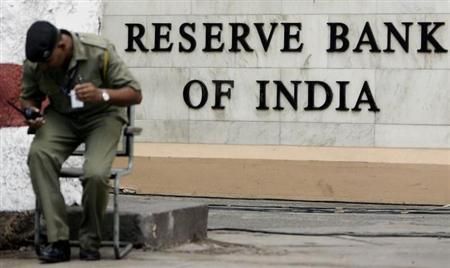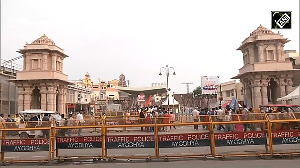Is it not natural that bank loans should turn non-performing, with real lending rates ruling at a 20-year high in a global recession, asks Indranil Sen Gupta
 There are three compelling reasons for Reserve Bank of India Governor Raghuram Rajan to cut interest rate by 25 basis points on August 9.
There are three compelling reasons for Reserve Bank of India Governor Raghuram Rajan to cut interest rate by 25 basis points on August 9.
First, a good monsoon should pull down both agflation and inflation.
Second, high real lending rates are delaying the economic recovery.
And finally, time is running out.
An RBI rate cut signal, on Tuesday, will rapidly lead to lending rate cuts with RBI open market operation finally extinguishing the money market deficit.
If the RBI waits till, say, October, it will get too close to the industrial busy season for banks to reduce rates.
The Consumer Price Index inflation is expected to ease towards five per cent by March -- the RBI’s target -- as a good monsoon douses agflation, from, say, six per cent in July.
Core inflation is already running at a low 4.8 per cent, while Brent has dipped to $40/barrel.
Second, high real lending rates continue to hurt loan demand and thus, delay the recovery.
Not surprisingly, growth has clocked a dismal five per cent in the old gross domestic product series in FY16.
This is well below our estimated growth potential of 7-7.5 per cent.
Blaming poor credit off-take on deteriorating bank asset quality is pretty much saying the same thing.
Is it not but natural that bank loans should turn non-performing, with real lending rates ruling at a 20-year high in a global recession that threatens to be longer than the Great Depression?
Finally, time is running out with the busy season round the corner.
An RBI rate cut now will immediately transmit to bank lending rate cuts with RBI OMO finally extinguishing the money market deficit.
At the same time, we emphasise that the present easy money market conditions are largely seasonal.
With the RBI calling off OMO again, the money markets will slip into deficit in the October-March industrial busy season.
As there are not many bullets left, it would be more prudent to act now for maximum impact.
The scope for further RBI rate cuts is limited to 25-50 bps.
After all, the RBI repo rate, at 6.5 per cent, is already trailing the 6.9 per cent medium-term CPI inflation rate, which is surely a good proxy for inflation expectations.
Shouldn’t the RBI wait for a full picture of the monsoon? Well, the monetary policy would be forward looking.
A key reason why inflation has breached the RBI’s five per cent target is that a poor rabi crop has pushed up pulses prices inflation to 30 per cent, adding some 60 bps to the CPI.
Pulses cropping has now jumped 40 per cent on good rains, thus, calming down the prices.
Also, RBI policy surely cannot impact agflation, in any case.
It may be recalled that RBI Governor Bimal Jalan eased rates during the 2002 drought to support recovery.
This laid the foundation of the India growth story, by catapulting the economy at the forefront of global recovery in 2003.
Finally, we are not able to find any statistical relationship between CPI inflation and policy rates, given that the Indian CPI basket is so food laden.
Indranil Sen Gupta is co-head & economist, India Research, at Bank of America-Merrill Lynch. Views are personal
Image: Reserve Bank of India. Photograph: Reuters












 © 2025
© 2025